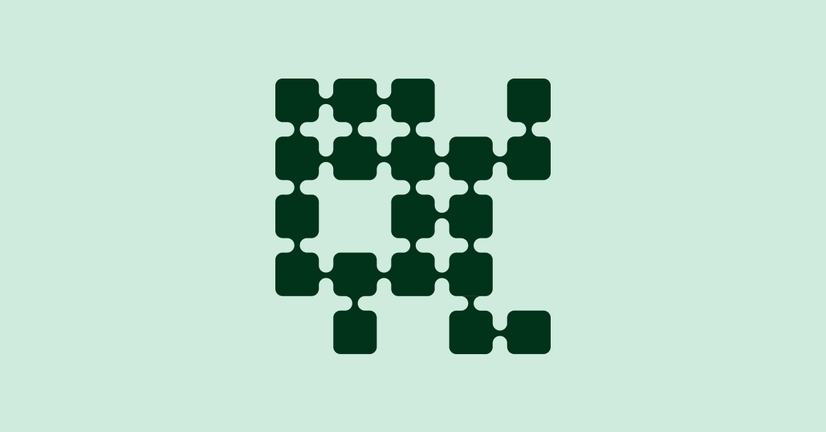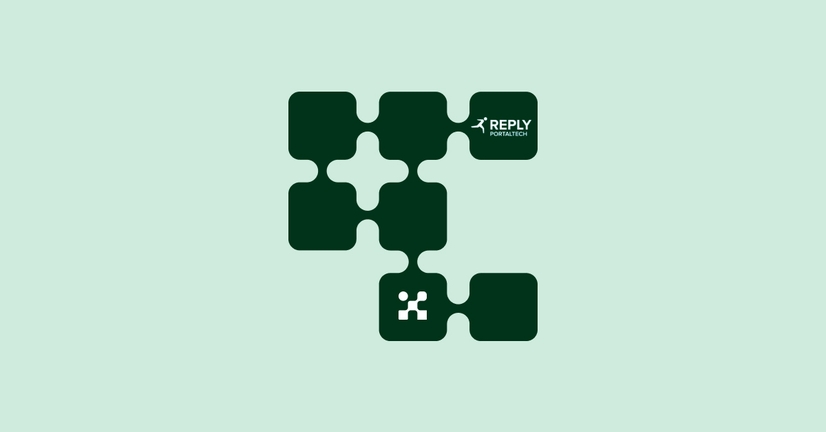Explore by Category:
Headless Commerce
What is a Headless CMS?
In this piece, we will cover the matter of what precisely headless CMS is. What distinguishes headless CMS on the market, what are the benefits of headless CMS, how headless CMS works, why headless commerce and headless CMS gain popularity in an eCommerce world, and some tips on what to consider when choosing headless CMS for eCommerce.
What is Headless CMS
Headless CMS – Headless Content Management System – allows to store and organize content. Headless refers to an accessible content management system interface that delivers content via a RESTful API or GraphQL API on any device. It follows a new approach on a market that focuses on connecting 3rd party applications instead of forming a monolithic instance.
Headless CMS what are the distinguishing factors?
Headless CMS can be described as a digital repository for blog posts, images, and videos that is a back-end system for content management. This covers a very high-level definition of headless CMS. Being a back-end system, headless CMS provides storing and delivering structured content. Headless CMS delivers an interface for editors responsible for managing the content. On the developers’ side, headless CMS supplies the content via APIs, so they gain flexibility when it comes to choosing frontend tooling. Some examples of pure headless content management systems are
- Contentful
- Sanity
- Bloomreach
- Storyblok
On the opposite side stand CMS formations that could be described as monolithic, coupled, or regular. Such examples are
- WordPress
- Drupal
- Joomla
Coupled CMS generally requires the use of specific frameworks and languages. Headless CMS orchestration allows developers to choose the framework they are most familiar with and comfortable working with. Regular CMS often provides only one way for presenting the content, usually the web view. The approach of a coupled CMS follows the general rule, which can be encapsulated in a statement ‘What you see is what you will get displayed’. It’s because of the strong relationship between the frontend presentation layer integrated with the traditional CMS.
Why Headless CMS?
Headless CMS systems enable marketing (or content) teams and IT professionals to work simultaneously and interdependently. This means both sides gain independence, aside from flexibility, which influences overall productivity. Unlike traditional CMS, headless CMS is not strongly bonded to the layout. Thus, any changes at the front of a website are easier to implement. This way, a headless content management system also secures easy and flexible future changes.
Headless CMS or decoupled CMS
To purely address a headless CMS, it is worth pointing out that there are sometimes misleading definitions like decoupled CMS. Some use such one as a substitute, but the truth is that decoupled and headless CMS is not exactly the same.
A decoupled content management system refers to the CMS that has
- A storing database
- A frontend (this one is included, even if it is on the other side of an API)
- An API
- An interface dedicated to administrators to create, edit and manage content
- A content delivery system at the front, separated from the backend and connected via an API
In general, we can say that decoupled content management systems add APIs on top to serve content. Some vendors of traditional CMS applied this approach as a quick gateway from structured and narrowed solutions. In such a way, they can also be classified as decoupled. On the other hand, Headless CMS can be described as API-exclusive.
A headless CMS, on the other hand, consists of
- Backend technology for content management system
- An API
How to know if a CMS is headless?
The difference here is pretty noticeable; a pure headless content management system does not include the front end. Usually, the development team decides which frontend solution will serve best. The choice is between building one from scratch, implementing a ready-made solution tailored to specific needs, or adapting the existing one.
Note: Depending on your needs, a decoupled CMS can sometimes cause turbulences. As it is not a pure headless solution, when boiling down, it can restrict the amount of the content to be applied. This is caused by the origins of an applied model, built for a single website. Thus decoupled API, influenced by the original approach, restricts the capabilities one would like to have. As a consequence website rendering possibilities and the flexibility of headless is not 100% assured.
How does a Headless CMS work?
Headless CMS enables more collaborative work on new pieces, as well as disposes effectively of and efficiently various forms of content without engaging developers. But how does headless content management system work? Headless CMS splits content management from the presentation layer of the provided content. The lack of a presentation layer does not mean that the CMS is incomplete. It just stands for the new approach. Headless CMS is a system that stores the content but is not responsible for its exposition. Thanks to an API, UI can be easily exposed with a JavaScript framework, or displayed on a mobile screen.
Headless CMS is a great option for various platforms. As a headless architecture secures a multichannel course, publishing dynamic content via multiple platforms and devices becomes more efficacious. And as a headless approach unlocks new possibilities, such as the abovementioned content presentation formats, the final outcome is not bounded by the flawed structure of a monolith. The content kept in a headless content management system is plain. As a result, the final display can be adequately exposed to any device.
What are Headless CMS Benefits?
The benefits of headless content management are numerous. However, it is worth pointing out some key areas headless CMS improves.
Headless CMS delivers flexibility on the developer's side
As it was mentioned above, headless CMS eases the work of developers. When a traditional CMS is replaced with a headless CMS (backend system), the workflow changes. Developers are no longer tightened up into monolithic limitations. They can choose whichever framework they are comfortable with. Also, when there is a need to change the tech stack, the process can be executed without interfering with the CMS.
Headless CMS can speak (with) languages
It’s true, and it’s all thanks to the API. Thanks to the decoupled architecture, developers don’t have to get familiar with the CMS’s technology. Instead, they can stick to the preferred one that suits the tech side of the business best. With headless CMS content is seen as data, and the main objective is to store and deliver content via API. This approach allows choosing any front-end programming language for building the website's front that will communicate with the stack. Writing new code lines is not tied to the 3rd party applications, and the headless CMS ensures the steadiness of a backend while maintaining flexibility at the front.
Headless CMS assures greater security
As a headless CMS communicates via API and is a separate block in the backend, secured by the provider, it becomes a less vulnerable entity of an attack.
Headless CMS offers a multitude of ‘heads’
In plain reasoning, choosing a headless approach means forming an entire business ecosystem agilely. By connecting the backend with the preferable frontend ‘head’ business gains an easy way to serve various content experiences for broad audiences via one admin interface. Again, having freedom of choice, it’s up to the team which ‘head’ to choose. One can stick to the ready-made solutions or enhance capabilities with an open-source.
Smooth and speed omnichannel activities
Frontend actions can be quickly formed without interfering with the backend. Once the new layer is ready, the stored content in a headless CMS is easily united with the latest frontend design.
Pure headless content via a headless CMS enables reaching audiences through multiple channels and devices. The instance gets the data from the server, and the rendering of the presentation layer is done outside a headless content management system by other, more sophisticated parties of a headless stack .
Thanks to the complexity of a headless CMS, further changes are managed and handled in one place. Once the edit is executed, it swiftly appears everywhere the content is located, e.g., apps, platforms, and websites.
What are the use cases for Headless CMS?
Headless CMS offers numerous possibilities, such as easy content management or dependence release. However, does it mean headless CMS is a must-have for everyone? Below are a few use cases where implementing a headless content management system makes a lot of sense.
Websites and web applications with headless CMS
Headless CMS fits well into the Jamstack, an approach designed to make the websites faster, secure, and easy to scale. It’s a relatively new concept that aspires to become a new standard of forming web architecture. As for that, headless CMS can work with static-site-generators like Gatsby, 11ty, and Next. It can also be used for web apps and are popular with modern Javascript Frameworks such React/Next.js (check our comparison of React vs. Vue if it is a topic of interest), VueJs/Nuxt.js, and Angular, or native mobile applications (iOS, Android.)
.
E-commerce enriched with headless CMS
There is already a term for that – headless commerce. However, it applies to a slightly bigger undertaking; still, headless CMS becomes an integral (and vital) part of composable commerce . Headless CMS provides great flexibility to marketing teams striving to implement changes at the front of the eCommerce quickly. Forward-thinking online stores switch to headless CMS to provide a unique user experience and drive higher revenue. Incorporating a proper headless CMS to the eCommerce Stack ( Shopify , Commercetools , Magento2 , or any other) unleashes resources on both the business and technical sides, reducing tedious tasks and boosting creativity.
Products and services with headless CMS
A real headless CMS, as already mentioned in this piece, does not have a frontend layer. Pure headless CMS is a backend system that stores and displays content. The content is raw, seen as data that is exposed when requested. Therefore, from a single source, the content for each product or service is managed and can be delivered to different instances such as platforms, websites, applications, IoT, or voice assistants.
Who should consider headless CMS?
There is already a vast pool of headless CMS options available on the market. So how to navigate? First, start with a question: ‘Do I need a headless CMS?’ Although headless CMS gains traction and unlocks new possibilities, it does not necessarily mean everyone should dive into headless.
Sticking to a regular CMS will be a good option for smaller organizations focusing on web content. Headless CMS requires some resources and collaborative work to use such CMS effectively. If there are budget and capacity limitations, a headless content management system will become the triumph of form over substance.
A search for headless CMS starts when businesses start to feel the burden of traditional one. The moment a simple task starts to consume too much time and resources, the outcome is only ok; it triggers the search.
As for that, a headless CMS will be a match for omnichannel, larger organizations with teams of developers, content creators, and designers. Any organization that operates multiple media daily; needs to deliver the content for various environments – all without the risk of putting down the entire system. Then a headless CMS will serve well.
How to choose the right headless CMS?
The short answer is ‘it depends.’ First, gather your team members from the business and technical side to internally challenge the question: ‘where do you see the organization in the next six months?’ The idea behind that first step is to make sure you won’t end up trapped again within another headless-like CMS. The initial recognition of various departments’ capabilities, goals, and plans will help shape the organization’s coherent workflow.
This will also help to avoid many misunderstandings. Together with the IT department, the business side should determine the scope of independence they want to achieve. This will aid in selecting tools so that each department can collaborate agilely.
Jointly representatives should confront:
- The business case behind the CMS. Is it the outdated technology holding back quick launches and iterations? Lack of proper omnichannel support and ability to tailor digital experiences? Tedious tasks because of endless content copy-paste?
eCommerce platforms handle a lot of data. However, they lack rich content management functionalities. Today’s pure headless CMS acts like a content hub supporting content delivery across multiple channels.
- The accurate understanding of headless CMS and headless approach. Before implementing any changes it is important that both sides (tech and business) are on the same page when it comes to headless. The business side should have a high-level understanding of the headless ecosystem, how it acts and influences various business areas. How it improves the workflow and performance. The technical side should be aware of business requirements. Aside from the tech needs the final interactive outcomes should be met too. Digital transformation should be held with the tech soft opportunities in mind.
- The budget. Here especially should be taken into account the Total Cost of Ownership: headless CMS cost (there are open-source, low-cost, and enterprise solutions), implementation costs, migration costs, hosting costs, and maintenance costs.
When critical areas are at least listed and discussed, a clearer picture of what is desirable and what is feasible emerges. Keep in mind to never bite more than you can chew and at the same time do not let yourself get swept up in the promises that often cover yet another vendor limited solution. The best is to follow the one that will help you grow and easily adapt.
What is the role of Alokai within Headless CMS?
Alokai is the set of developers’ tools that accelerate, orchestrate, and customize user experiences at the front of headless commerce. Created by developers to upgrade eCommerce and assure smooth headless functioning. Backed by the largest open-source community, VSF allows easy plug-in of any headless CMS and 3rd party applications. As a frontend orchestrator Alokai assures smooth eCommerce performance. The tech side can customize experiences and the business side can focus on shaping the content.
To learn more about Alokai, check our story !
Share:
Share:
Frequently asked questions
More in Headless Commerce
Ready to dive in? Schedule a demo
Get a live, personalised demo with one of our awesome product specialists.






















